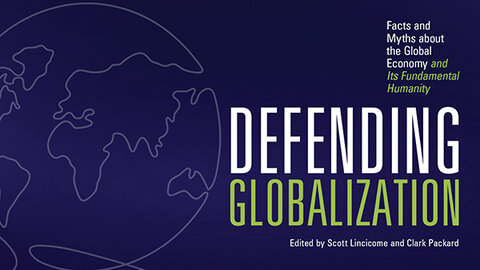To prevent public debt from soaring in the wake of the global financial crisis in 2009, Germany has enshrined a “debt brake” in its constitution. The debt brake sets strict limits on federal public debt levels and restrains government borrowing. This fiscal rule has served its purpose, and public debt has been on a downward path, dropping by about 15 percentage points of gross domestic product (GDP) since its introduction. Yet the government suspended it during the pandemic and raised an extra €370 billion of debt in 2020 and 2021. It also tried to circumvent this rule on several occasions by setting up off-balance sheet funds, such as a €100 billion special fund for military spending during the war in Ukraine.
In 2022, the German parliament decided to shift about €60 billion from the unused debt contracted during the covid-19 crisis into a new climate fund to finance Germany’s green transition. However, to everyone’s surprise, the Federal Constitutional Court ruled this move illegal, leaving politicians scratching their heads on how to pay for the planned lavish green subsidies. Instead of realizing that the financing shortage is primarily due to a bloated welfare system and stagnating economy, green and leftist politicians are blaming the debt brake and trying to get rid of it.
Rules Can Improve Fiscal Performance
The German debt brake limits the net structural borrowing of the federal government to 0.35 percent of GDP per year but retains some flexibility by allowing additional borrowing during economic downturns. In addition, the rule can be suspended in case of natural disasters or emergency situations, as it was done from 2020 to 2022 because of the pandemic. The German debt brake is much stricter than the European Union’s fiscal framework, which allows for a structural deficit of 3 percent of GDP per year. The German fiscal rule is one of the most stringent in the world, both because of its tight numerical target and the constitution anchor.
Switzerland had also introduced a hard debt brake more than twenty years ago. The rule was approved by a large majority of voters in a constitutional referendum and subsequently served as a blueprint for the German rule. Moreover, the Swiss cantons benefit from a long tradition of fiscal rules and decentralized fiscal autonomy. Another case in point is Sweden, which also has a strict fiscal framework based on numerical rules, such as a structural surplus budget target of one-third of a percent of GDP and a public debt ceiling of 35 percent of GDP.
Over the past thirty years, fiscal rules have become very popular, and the number of countries that have introduced them surged from less than ten in 1990 to over a hundred by 2021, according to the International Monetary Fund (IMF). The adoption of fiscal rules has often been driven by financial and economic crises that triggered sharp rises of public debt. Several EU countries have adopted national rules in parallel with the common EU fiscal framework.
With such a high number of countries using fiscal rules, one may wonder why government debt has ballooned around the world in recent years. The answer is simple: the design of the fiscal rules is key, and in many countries, the rules are either too soft or their implementation is too lax. Fiscal rules are effective only when they come with a strong political commitment, a robust legal basis to ensure adequate enforcement, and strict monitoring by independent fiscal institutions.
A survey by the Swiss Federal Finance Administration concluded that rules improve fiscal performance in terms of better budget balances, lower debt, and reduced spending volatility. In addition, empirical research showed that fiscal rules are associated with more-accurate budget forecasts and improved sovereign bond ratings. This explains why even countries with softer fiscal rules, such as Australia and the Netherlands, still benefit from better medium-term budget planning and improved fiscal outcomes. In recent years, public debt has declined to moderate levels in Germany and other countries with fiscal rules—despite the pandemic and war in Ukraine—whereas it has grown to very high levels in the United States and the United Kingdom (Figure 1). As a matter of fact, the US Government Accountability Office recommends that the US introduces strict fiscal rules as well to correct its “unsustainable long-term fiscal path.”
Figure 1: Government debt
macovei1.png
Source: Data from the “World Economic Outlook Database,” International Monetary Fund, accessed January 31, 2024.
Fiscal Rules Do Not Undermine Public Investment
Despite its success, the debt brake has ended up under strong criticism from both mainstream pundits and leftist politicians in Germany. They describe it as “overzealous” and a “straitjacket” on public investment, endangering the greening and modernization of the economy. For quite some time, the debt brake has been a scapegoat for Germany’s underinvestment in infrastructure—railways, bridges, schools, and digital infrastructure.
However, this is not true. First, the €60 billion represents only about 1.5 percent of GDP and is hardly a game changer in a country like Germany where government spends a whopping 50 percent of GDP. Second, if Germany cannot finance public investment within this huge budget envelope, then the problem lies elsewhere—bloated government consumption, excessive social spending, heavy bureaucracy, and environmental regulations.
As a counterexample, in Korea, public investment relative to GDP is more than double than in Germany while total government spending is about half (i.e., 25 percent of GDP), and there is not much complaint about Korea’s infrastructure. Third, the German fiscal rule is quite flexible as it pursues a structural deficit target over the business cycle and allows for escape clauses in case of emergency so that it does not penalize investment in times of fiscal adjustment.
In principle, fiscal rules are not an obstacle to public investment. They only ensure that the latter is financed in a transparent way by tax revenues and not by government deficits and runaway debt. The same survey by the Swiss Federal Finance Administration showed that a majority of the reviewed studies suggests that fiscal rules may undermine public investment only if they are rigidly applied whereas fiscal rules with built-in flexibility do not undermine public investment. It can actually be argued that by disciplining current consumption, reducing the debt burden, and minimizing the cost of capital, fiscal rules provide more leeway for investments, both public and private. Figure 2 shows that countries with strict fiscal rules like Switzerland and Sweden actually have higher public investments than the more profligate UK and the US, while Germany does not lag behind by much.
Figure 2: Public investment
picture1.png
Source: Data from “Government at a Glance 2023,” Organisation for Economic Co-operation and Development, accessed January 31, 2024.
Public versus Market Investment
One key element that the majority of mainstream pundits seems to ignore is that not all public investment is useful and productive. As a matter of fact, public investment can be quite wasteful if it is politically motivated, poorly planned, bureaucratically managed, and subjected to fraud and corruption. According to the IMF, countries waste on average about a third of their infrastructure spending due to inefficiencies, and the loss can go up to half in low-income countries. According to Murray Rothbard, public investment represents a diversion of economic resources from their most valued uses as determined by individuals in the market process. By misallocating factors of production, the social and economic usefulness of government spending can be negative in many instances.
Public investment inefficiencies are certainly more limited in the case of Germany than in low-income countries. However, in this case, the transition of Germany to carbon neutrality by 2045 is by all means a politically motivated project. Its scientific justification and proposed policy actions are highly debatable and have nothing to do with consumer preferences. Most “green investments” are in reality a pile of subsidies for electric vehicle and battery factories, charging infrastructure, bike lanes, hydrogen production capacities, and other projects that individuals would not otherwise undertake freely.
In addition, the democratic foundation of this mega country project is very flimsy. The green transition comes with a huge price tag, estimated at about €6 trillion or 150 percent of GDP. It would normally require a popular vote via referendum, rather than implementation via top-down decisions by politicians close to the Green Party. The Green Party won a mere 15 percent of votes in the last elections, and its support has eroded ever since. On the other hand, similar to the Swiss, the majority of Germans support the debt brake, according to a survey by the broadcaster ZDF.
It is probably high time for the German political elites to acknowledge that their overambitious green agenda is hardly affordable given the country’s weak growth potential and the massive burden of its welfare state. Instead of removing the debt brake and financing the huge cost of the green transition through the back door, they should rather ask directly for public approval in a democratic way.
























